1
2
3
05-Nov-2025

The fungal tRNA ligase (TRL1) is essential for tRNA repair, as well as splicing mRNA in the unfolded protein response (UPR) brought about by stresses on the endoplasmic reticulum. Following several recent crystallographic studies on the N-terminal adenylyl...
21-Oct-2025

Single-stranded DNA-binding proteins (SSBs) coat single-stranded DNA (ssDNA) and are fundamental to DNA replication. In eukaryotes, the main component of SSB is the RPA (Replication Protein A) complex, a key factor in DNA replication by promoting the...
31-Jul-2025

Monkeypox virus (MPXV), a DNA virus endemic to Central and West Africa, caused an unexpected multi-country outbreak in 2022, dominated by a less virulent but more transmissible lineage. While this lineage generally caused milder disease, it spread widely...
13-Jun-2025

We all use smart devices containing billions of nanometre-sized transistors. However, as predicted by Moore's law, the exponential scaling of transistor size and processing power has significantly slowed. Manufacturing increasingly smaller transistors...
02-May-2025

Protein purification and biophysical characterisation is one of the founding and fundamental building blocks of structural biology. As an initial step for understanding the quality of the purified sample before functional and/or structural analysis, or...
16-Apr-2025

The article "Inline Raman Spectroscopy Provides Versatile Molecular Monitoring for Platelet Extracellular Vesicle Purification with Anion-Exchange Chromatography" explores the use of inline Raman spectroscopy as a real-time analytical tool for monitoring...
17-Jan-2025

ß-glucosidase enzymes catalyse the final step of cellulose decomposition, whereby cellobiose, the product of previous enzymatic reactions in the cellulose breakdown process, is converted to glucose (Figure 1A). Whilst ß-glucosidases are attractive...
16-Dec-2024

Flotillins are fundamental proteins in eukaryotic cells for membrane function, specifically for the formation of microdomains or lipid rafts, which are then central to cell signalling and trafficking. It is increasingly clear that flotillins, and in particular...
25-Oct-2024

Researchers at the Institut de Biologie Structurale have made significant progress in understanding NADPH oxidases (NOX), enzymes critical for producing reactive oxygen species (ROS) used in immune defence and cellular signalling. While much has been...
23-Oct-2024

In NF-κB signalling, phosphorylation and activation of the Inhibitor of κB Kinase (IKK) results in IKK-mediated phosphorylation of Inhibitor of κB (IκB), priming it for subsequent ubiquitination and degradation. This...
03-Oct-2024

Frizzled (FZD) receptors are transmembrane G-protein coupled receptors (GPCRs) activated by the binding of a ligand, Wnt, to an extracellular Cysteine Rich Domain (CRD). Signalling downstream of FZD receptors is fundamental to many different biological...
27-Aug-2024

The molecular mechanisms governing the regulation of gene expression are of significant interest to biological researchers across a large number of fields. An important cog in the gene regulation machinery is the 1.5MDa multisubunit complex dubbed Integrator....
08-Aug-2024

Nanobodies (Nbs) are small and stable fragments of heavy chain antibodies. Nbs are just single-domain fragments but have the same full antigen-binding capacity of the full antibody. Naturally occurring in camelids, the size and flexibility of Nbs makes...
17-Jun-2024

DNA is known to take on different structures beyond its classic double helix, including the intercalated motif (i-motif) structure. These i-Motifs (iM) are non-canonical DNA structures that can form in single-stranded, cytosine-rich regions of DNA. These...
21-Dec-2023

Escherichia coli is one of the most common and well-documented bacteria. Adherent-Invasive E. coli (AIEC) is a subclass often found in the human gastrointestinal tract, but their low abundance, plus a healthy immune response, makes them little threat....
18-Dec-2023

Helicases are ubiquitous molecular motor proteins involved in all aspects of DNA metabolism. Their primary function is to catalyse duplex DNA unwinding in an ATP-dependent fashion. A subset of DNA helicases is also known to unwind non-canonical secondary...
01-Dec-2023

X-ray crystallography is one of the most widely utilised techniques for structure-based drug design, producing electron density maps of protein-ligand complexes that permit an understanding of the interactions involved in the formation of the complex....
17-Nov-2023

Coordinated by Instruct-ERIC, the Fragment-Screen project aims to develop innovative instrumentation and make significant advances in fragment-based drug discovery (FBDD). The project brings together experts in a variety of structural biology domains,...
10-Oct-2023

In recent years, the field of structural biology has undergone a revolution thanks to the exceptional predicting capabilities of AI models, such as AlphaFold. With these tools, predicting the 3D structure of proteins has become quicker, and more accurate...
09-Oct-2023

Drug-resistant bacteria presents one of the biggest challenges for medical scientists worldwide. Part of the problem has been a distinct lack of new antibiotics added to the existing arsenal. Historically, many antibiotics were developed from natural...
11-Jul-2023

A collaboration between the Márquez group at EMBL Grenoble and Italian researchers from the European Biomedical Research Institute of Salerno (EBRIS) has led to the development and characterisation of a novel small molecule inhibitor, which shows...
16-Jun-2023

Treatment against SARS-CoV-2 has mostly come in the form of vaccinations and preventative measures, however these are always at risk of inefficacy by variants. In order to provide a more flexible solution, prophylactic treatments have been developed.
One...
13-Jun-2023

Transposases are crucial enzymes in catalysing the process of transposition of mobile DNA elements called transposons across loci in genomes. This reorganisation of DNA caused by the displacement of DNA mobile elements across genomes is central to long...
07-Jun-2023

The glucocorticoid receptor (GR) is a ubiquitously expressed nuclear hormone receptor. It is activated through endocrine signalling by cortisol, and is of fundamental importance for development, skeletal growth, and other bodily functions. The structure...
20-Apr-2023

The Robotein® facility, which is part of Instruct-BE, offers biomolecular analysis and protein production under the umbrella of two academic laboratories in Belgium: the Centre for Protein Engineering (CIP) at the Université de Liège...
03-Feb-2023

NK cells are part of the immune response – they are lymphocytes equipped with a wide range of activating and inhibitory surface receptors, allowing them to recognise and kill malignant or infected cells.
NKR-P1 is a receptor on NK cells, specifically...
20-Jan-2023

Conservation of Drosophila melanogaster Septin G-interfaces studied by University Sao Paulo
Septins are filamentous GTP-binding proteins present in most eukaryotes. Their role was initially identified to be in the process of cytokinesis and septum formation...
19-Dec-2022

The AlphaFold database, co-developed by DeepMind and EMBL-EBI, is home to hundreds of millions of predicted protein structures, determined using artificial intelligence. Advancing on the experimental work done for years by structural biologists, AlphaFold...
04-Oct-2022

Two-and-a-half years have passed now and the SARS-CoV-2 pandemic is still ongoing, showing that we need to find long-lasting solutions to fight the virus and the constant appearance of new variants. Although vaccines have been developed that help control...
22-Sep-2022

In cells, DNA is wound around complexes made of eight histone proteins, forming nucleosomes. These nucleosomes make up the standard configuration of DNA, chromatin.
The assembly of nucleosomes requires the specific binding of 8 histones: an (H3-H4)2...
25-Aug-2022

Actin is one of the most highly conserved proteins in eukaryotes, playing a pivotal role in cell migration, endocytosis, and muscle contraction. It is the coordinated polymerisation and disassembly of actin filaments that allow it to play such a fundamental...
19-Aug-2022

The continuous rise in drug-resistant bacteria is a significant concern for global health, made even more critical as few new antibiotics have been added to the market in recent years. That is, until teixobactin was discovered as a potential new antibiotic,...
03-Aug-2022

The group II chaperonin TRiC (TCP-1 Ring Complex) is essential for the folding and function of a wide variety of proteins including the cytoskeletal polypeptides, actin and tubulin.
As previous studies have uncovered, TRiC is made up of 8 subunits, CCT1-CCT8...
06-Jul-2022

Microtubules are core components of the cytoskeleton that are essential for cargo trafficking, cellular organisation, and force generation. They are composed of α- and β-tubulin heterodimers and are highly heterogeneous, allowing for functional...
12-Jan-2022

The continuous generation of SARS-CoV2 variants in the infected population has resulted in several which have impacted significantly on the epidemiology of COVID-19, with some causing outbreaks which have gone on to dominate the SARS-CoV2 virosphere and...
15-Dec-2021

As the COVID-19 pandemic remains, the conversation around variants continues with it. The emergence of new variants brings the risk that vaccines developed against earlier strains of SARS-CoV-2 might not be efficient against new strains. Understanding...
23-Jul-2021

GABAA receptors are ligand-gated chloride channels in the vertebrate central nervous system, with a well-documented pharmacology: GABAA receptors are the targets of several human drugs, with anticonvulsant, anti-anxiety, analgesic, sedative and anaesthetic...
15-Jul-2021

Septins are a family of filament proteins involved in many essential cellular processes including cytokinesis, exocytosis, membrane barrier formation and bacterial entrapment.
Fundamental to the structure of septins is the coiled coil, a motif based...
29-Apr-2021

Metal ions are present in proteins and enzymes, often in the context of their catalytic properties. However, metal ions are also fundamental to the folding and structure of proteins such as enzymes. Previously described metal-ion binding motifs include...
12-Mar-2021

Several vaccines have been developed in recent months to combat the ongoing COVID-19 pandemic, caused by SARS-CoV-2. Whilst these have been effective in neutralising the initial SARS-CoV-2 virus, many variants have appeared across the globe. This is as...
12-Mar-2021
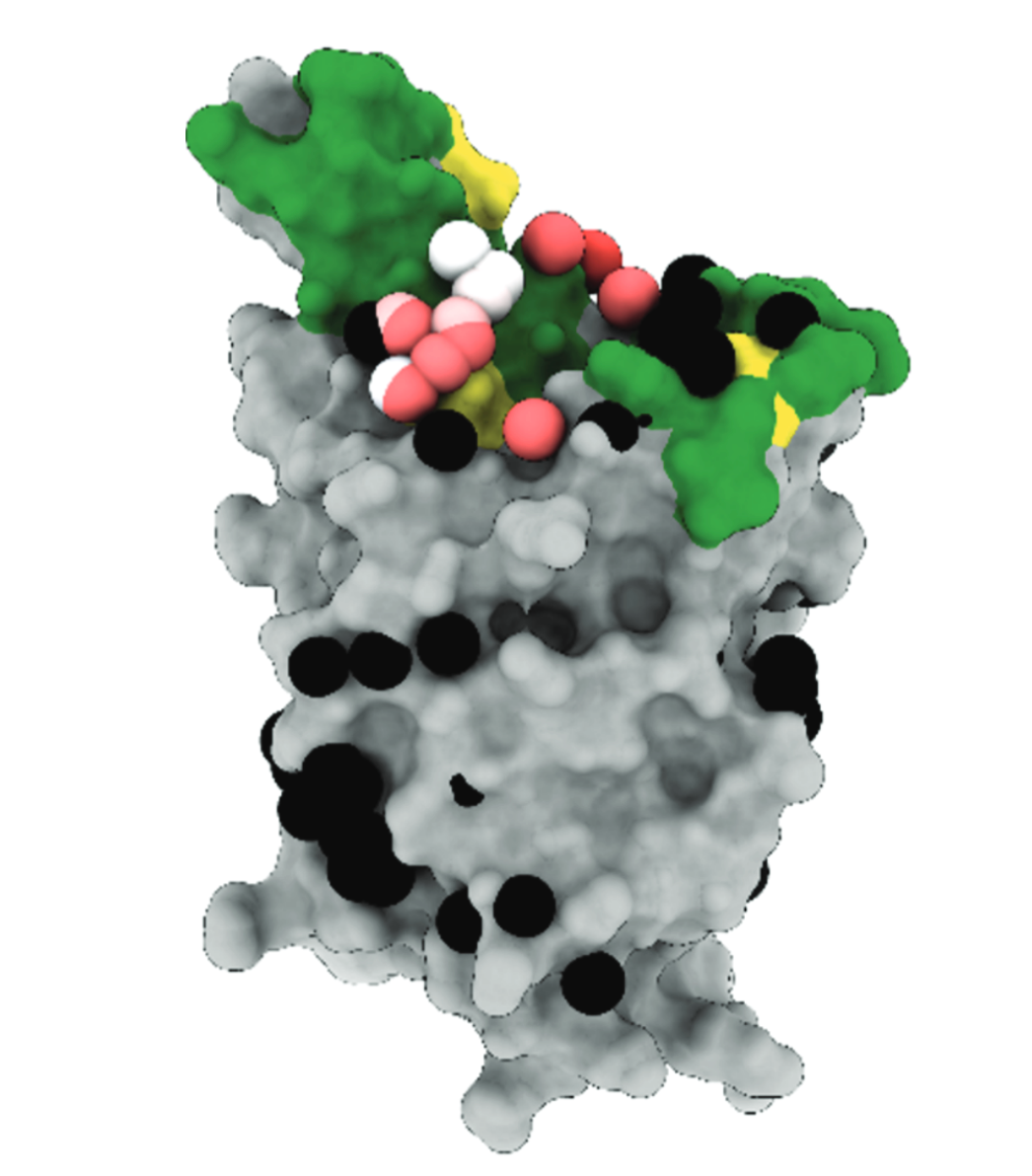
Since the sequence of SARS-CoV-2 was first reported in January 2020, vaccines have been seen as the most effective way to minimise the global risks of COVID-19. Whilst a number have been produced worldwide, several variant strains of the virus have emerged...
12-Mar-2021
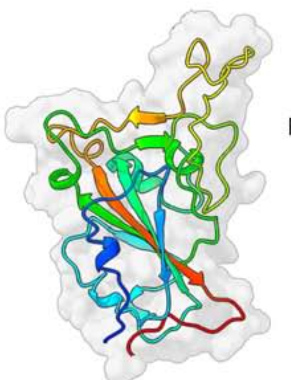
Antibodies are crucial to immune protection against SARS-CoV-2, the virus responsible for the global COVID-19 pandemic. Understanding the way in which they interact with the virus, binding and neutralising, can pay significant dividends in the ongoing...
29-Jan-2021

In the past year, researchers around the world have worked to develop therapies and vaccines against the SARS-CoV-2 virus responsible for the COVID-19 pandemic. One of the main targets for vaccine development is the trimeric spike (S) protein. S is a...
15-Jan-2021
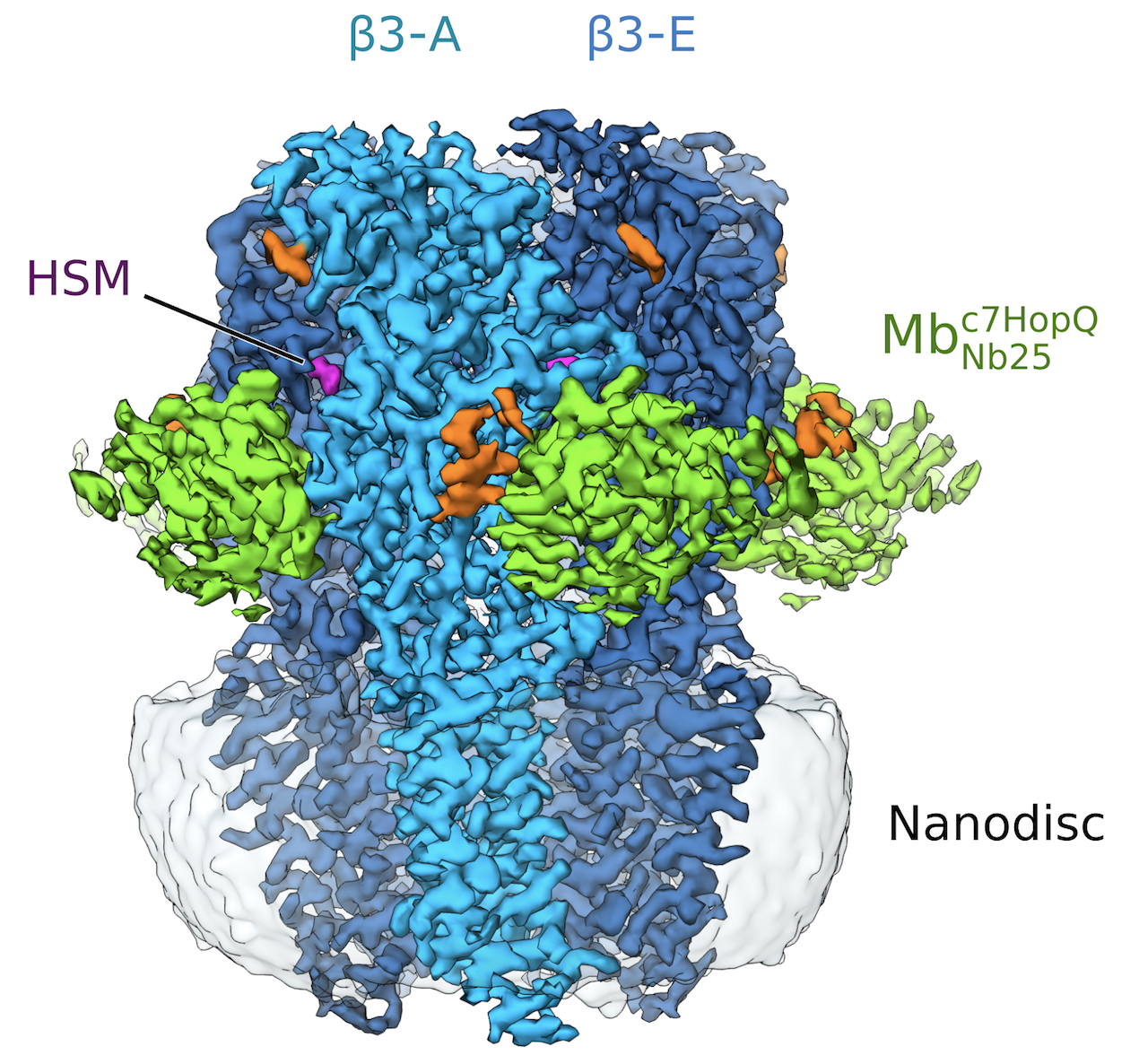
Single particle Cryo-EM has evolved extremely rapidly in the recent years (with great advances in the quality of the instrumentation and the methods used for data analysis) and has become the technique of choice to determine the structure of membrane...
12-Jan-2021
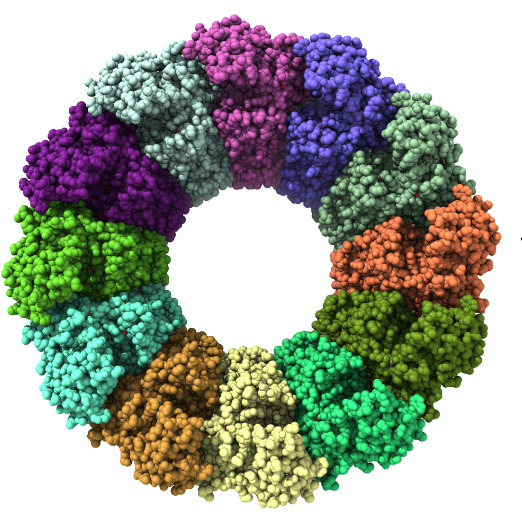
Transcription and replication of alphaviruses such as chikungunya take place in a coordinated fashion in virus-induced membranous organelles called spherules within host cells. The formation of these viral niches facilitates viral RNA synthesis and protects...
28-Oct-2020

Since the start of the COVID-19 pandemic, researchers around the world have sought to understand the infection mechanism of the SARS-CoV-2 virus as a step towards designing new therapies and vaccines. Recent work at the Rosalind Franklin Institute has...
21-Sep-2020

Serine hydroxymethyltransferase 2 (SHMT2) is a mitochondrial protein with a critical role in amino acid and nucleotide metabolism – both of which are essential for cell growth and proliferation. In recent years, it has also been postulated...
20-Mar-2020

To ensure cell survival, growth and differentiation, gene expression must be continuously modulated. Not all gene products are useful at every stage of cell life and the bulk of the genome is silent, packaged as chromatin (DNA wrapped around histone proteins),...
07-Jan-2020

Influenza (commonly known as the flu) is an acute, respiratory infection responsible for over 3 million cases of severe illness each year. Most clinical cases of flu are caused by Influenza A viruses, which are also responsible for widespread outbreaks...
14-Nov-2019

During cell division, duplicated DNA needs to be evenly distributed between two daughter cells so that each receives a single, complete set of chromosomes. When chromosome segregation fails, the consequences can be catastrophic - causing genetic disorders,...
21-Oct-2019

Double-stranded (ds)RNA viruses are a large and diverse group of viruses that infect a range of hosts, including animals, plants, fungi, and bacteria. Members of the dsRNA viruses include rotaviruses (a common cause of gastroenteritis), bluetongue virus...
03-Sep-2019

A recently developed scientific technique is allowing researchers at Instruct Centre IT to investigate proteins in their natural state. Traditional structural studies could only take place in vitro, which may result in improper protein folding and a lack...
03-Sep-2019

Just like other animals, bees can contract viruses from parasites such as mites. A virus of particular significance is the Deformed Wing Virus (DWV), which has been causing epidemics in Western honey bee populations. As the name suggests, DWV causes pupae...
03-Sep-2019
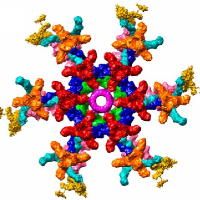
Our ability to fight bacteria using antibiotics is limited by the rise of resistant strains. However, understanding the mechanisms of bacteria’s natural enemy, the bacteriophage, may lead to new treatments. “Bacteriophage phi812 … can...
23-Aug-2019

Bacteriophages are viruses that infect and replicate within bacteria and archaea. Recent work at the Instruct-ES Centre (CNB-CSIC) in collaboration with the IRB-CSIC centre in Barcelona, has elucidated critical aspects of the T7 tail protein structure...
22-Aug-2019

Viruses are nearly always the villain – causing death and disease, but if they are understood well enough, scientists can use them as a cancer treatment. Scientists working at Instruct Centre FR2 have created a detailed picture of how one particular...
20-Aug-2019

Currently there is no treatment for the deadly Hantaan infection, but new information about the virus structure could allow researchers to design a specific antiviral drug to target the virus. In an important step towards new therapies, Benoît Arragain...
19-Aug-2019

Mitochondria generate energy for the body by making ATP (adenine triphosphate) from ADP (adenine diphosphate). For this to happen, cells must shuttle ADP from the cell cytoplasm into the mitochondria across the mitochondrial membranes. Similarly, once...
19-Aug-2019

The World Health Organization ranks bacterial infections among the leading causes of illness and death worldwide. As infectious diseases continue to evolve and spread at an unprecedented rate, structural biologists are working to decipher how bacteria...
19-Aug-2019
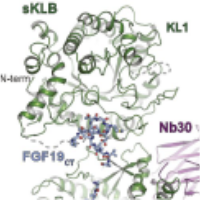
Every second, the human body sends thousands of messages between cells in order to regulate the functions of the body. Fibroblast growth factors (FGFs) are messaging signals that are involved in a number of critical metabolic processes...
